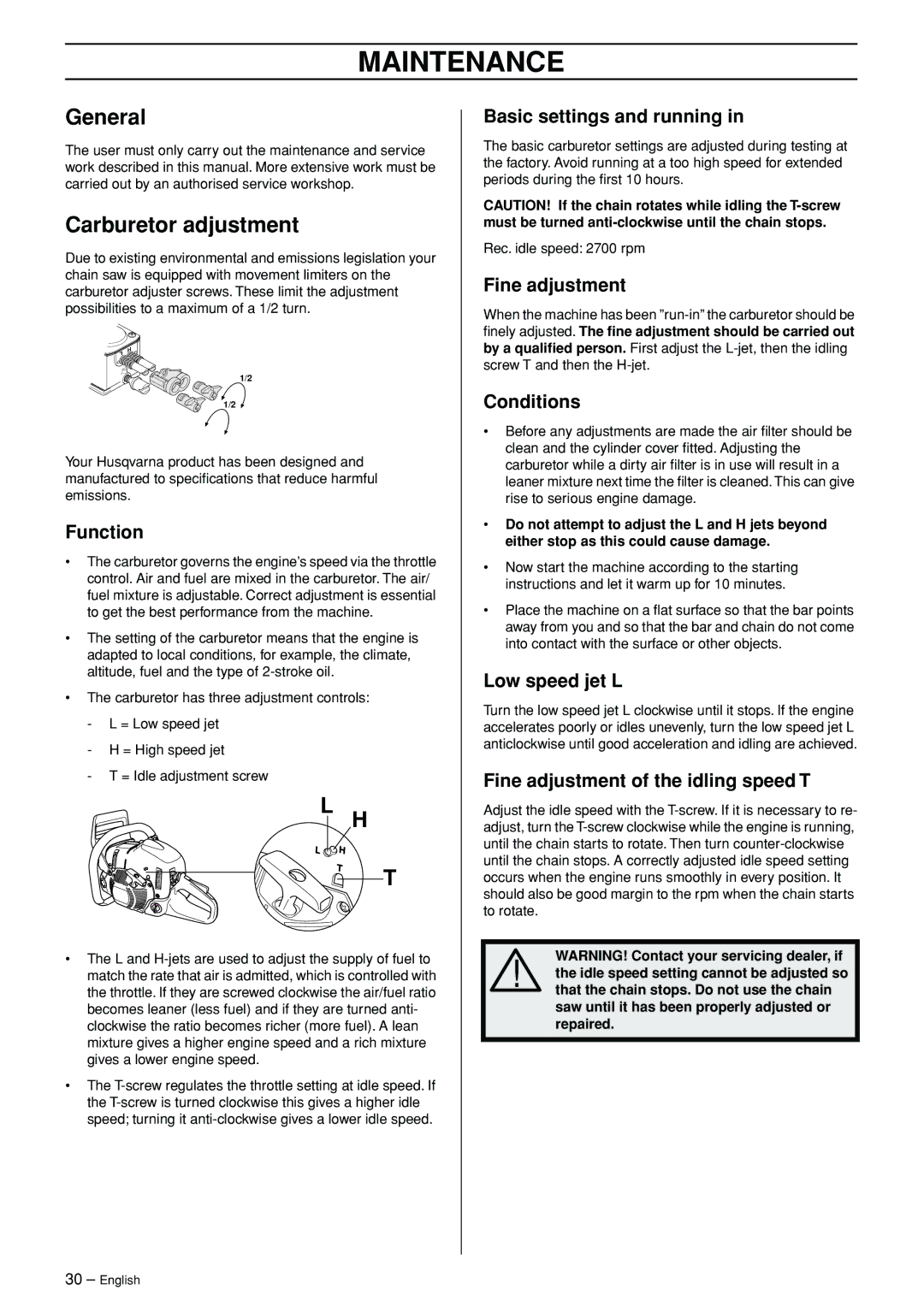570, 575XP specifications
The Husqvarna 570 and 575XP chainsaws are remarkable tools designed for professional logger and forestry applications. Built for performance, durability, and ease of use, both models are engineered to handle the demands of heavy-duty cutting tasks while delivering outstanding power-to-weight ratios.One of the standout features of the Husqvarna 570 is its X-Torq engine technology, which is designed to provide increased power while reducing fuel consumption and emissions. This engine technology allows the chainsaw to operate more efficiently, making it an environmentally friendly choice for users who are conscious about their impact on nature. The 575XP model also comes equipped with the X-Torq engine, delivering exceptional performance in a compact design.
Both models feature Husqvarna’s Air Injection system, which helps to minimize wear and tear by filtering out larger particles before they reach the air filter. This not only extends the life of the air filter but also allows for longer operating times between cleanings, thus improving overall efficiency.
The ergonomic design of the Husqvarna 570 and 575XP enhances operator comfort and control. The chainsaws come with a low-vibration system, which significantly reduces vibrations felt by the operator, making extended use more comfortable. The front and rear handles are designed for optimal grip, allowing for better maneuverability and reducing operator fatigue during prolonged cutting sessions.
Another key characteristic is the quick-release air filter, which allows for easy access for maintenance. This feature is particularly beneficial for professionals who need to ensure their equipment remains in peak condition.
In terms of safety, both models include a chain brake that provides instant stopping capabilities for added security during operation. This is a crucial feature when working in potentially hazardous environments.
With their combination of innovative technologies, ergonomic design, and robust performance, the Husqvarna 570 and 575XP chainsaws stand out in the market as reliable tools for professionals needing efficiency and power. Whether tackling large trees or performing forestry maintenance, these chainsaws are designed to deliver exceptional results.

 T
T